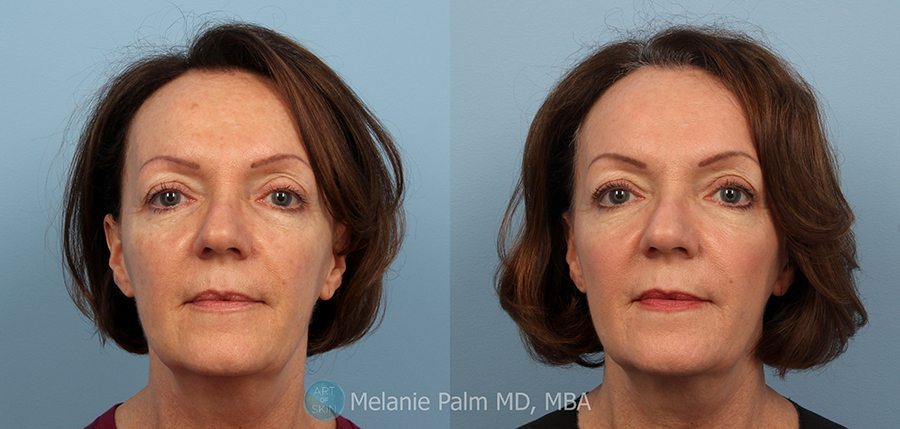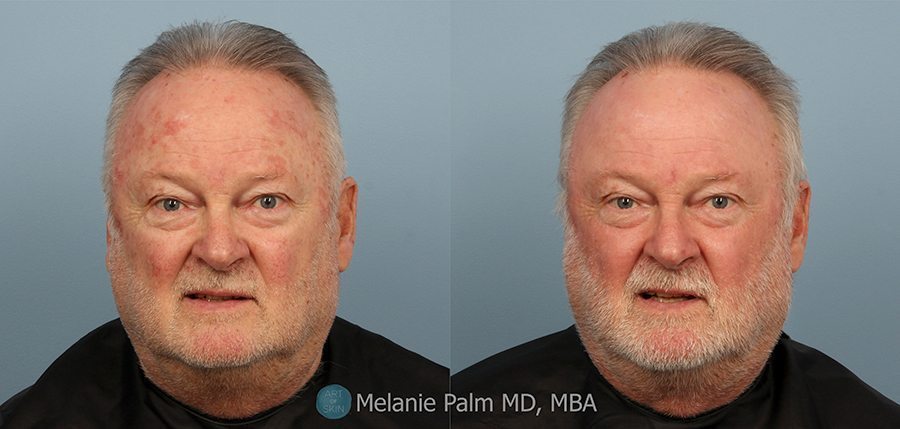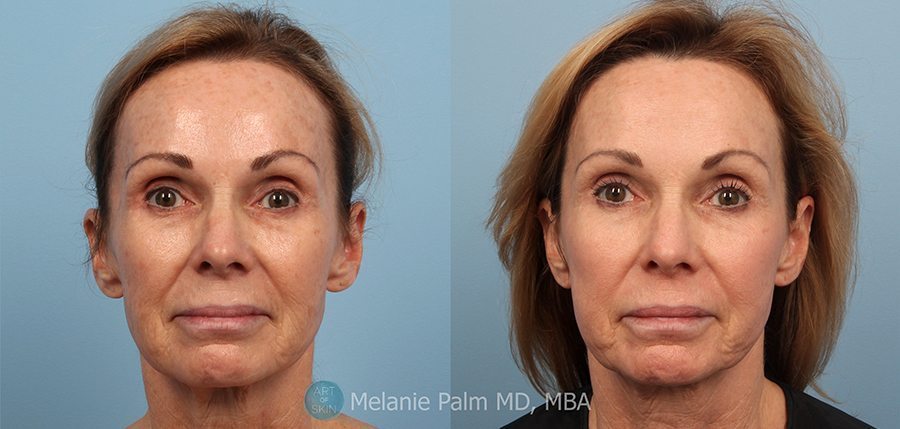PDT for Precancerous Lesions Before & After
Photodynamic Therapy, Blue Light Therapy for Treatment of Actinic Keratoses (AK)
Photodynamic therapy, or PDT, is sometimes referred to as “blue light therapy” and is FDA-cleared for the treatment of actinic keratoses (AK). AKs are precancerous skin lesions, a small proportion of which may develop into squamous cell carcinoma (SCC), the second most common form of skin cancer. AKs are a marker of cumulative sun damage.
Photodynamic therapy involves a chemical reaction that allows for the selective destruction of abnormally growing cells including skin cells of precancerous skin lesions. PDT involves the topical application of a photosensitizer, a chemical that is activated by specific wavelengths of light, usually blue or red. In the presence of oxygen and the right bandwidth of light, the photosensitizer creates a chemical reaction that selectively destroys rapidly dividing cells such as precancerous skin lesions. The most common photosensitizer for PDT of the skin in the U.S. is called aminolevulinic acid (ALA), or brand name Levulan. Methylated ALA is approved and used more frequently in other areas of the world for deeper skin penetration.
PDT performed with blue light for AK treatment does not provide significant skin rejuvenation. In the majority of cases, Dr. Palm may recommend the addition of an IPL photofacial with blue light during PDT treatment. The addition of IPL during PDT has several benefits including improvement of skin discoloration and brown spots, minimization of broken blood vessels, collagen stimulation, skin texture improvements, and better clearance of AKs. PDT is most frequently performed on the face, but the scalp, neck, chest, hands, forearms and even legs respond well to treatment. In addition to AKs, PDT can be used to minimize oil glands and improve acne.











